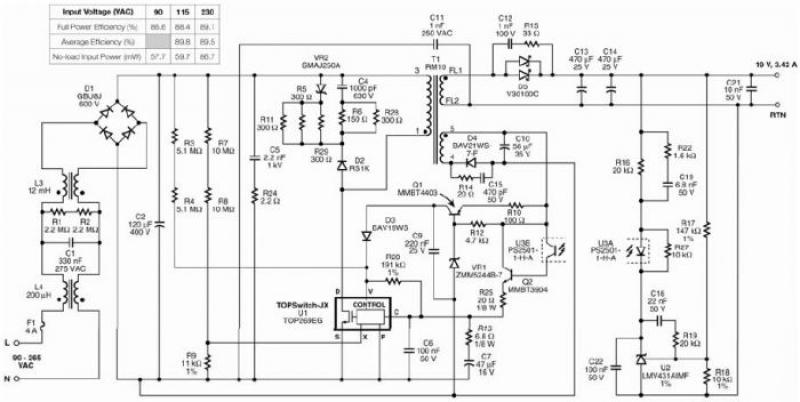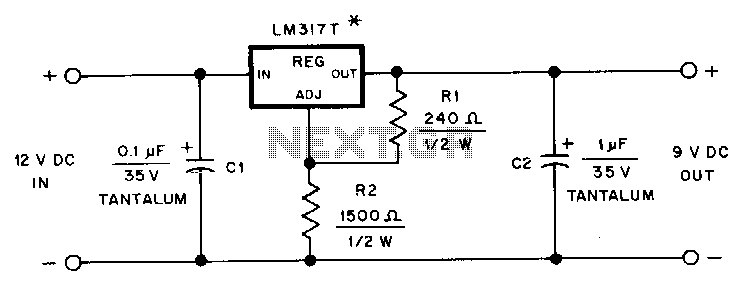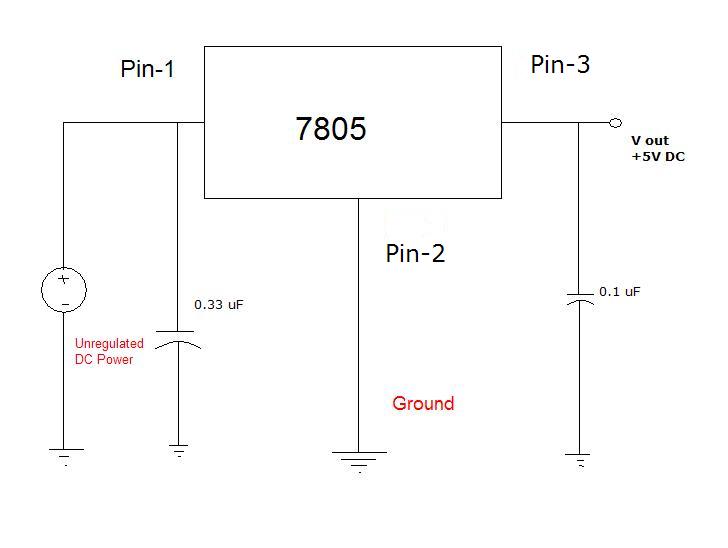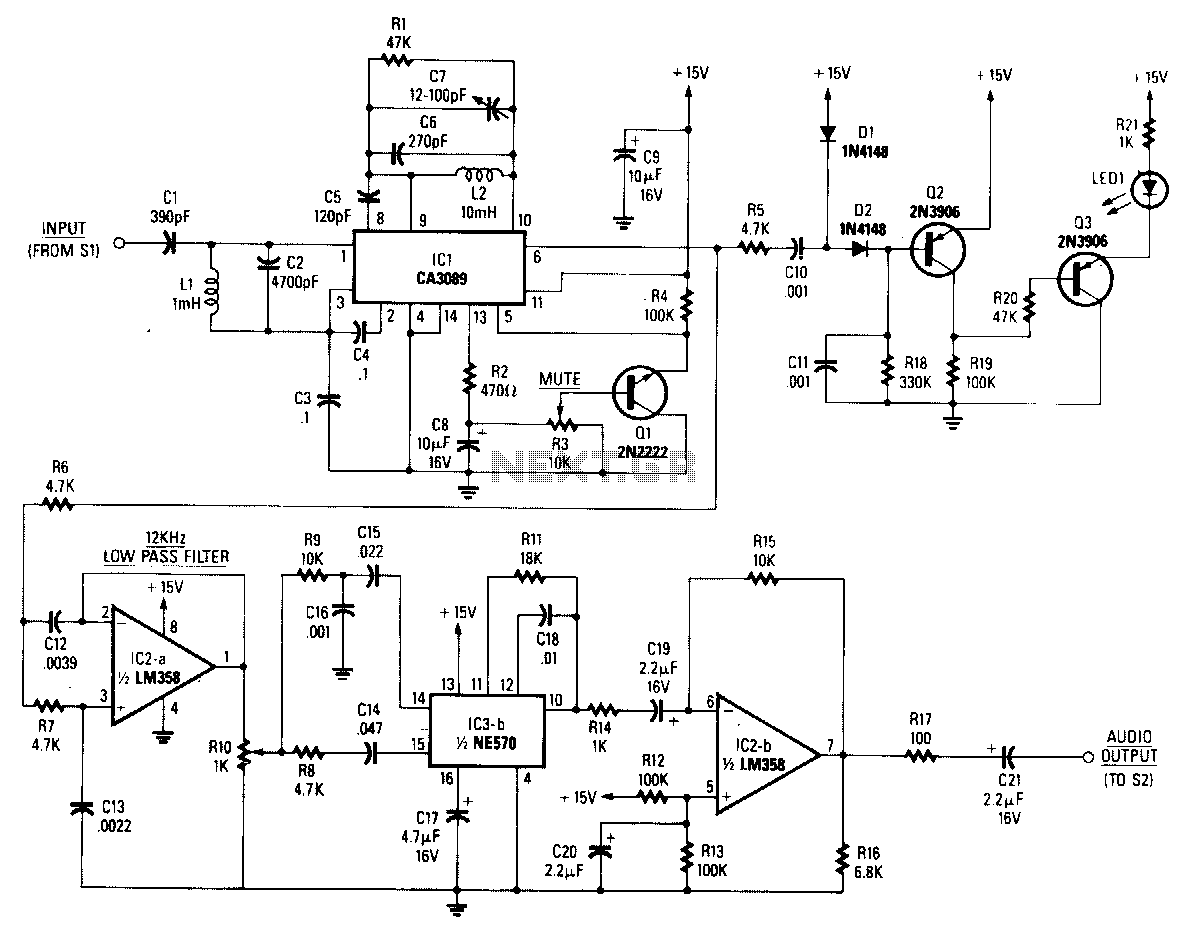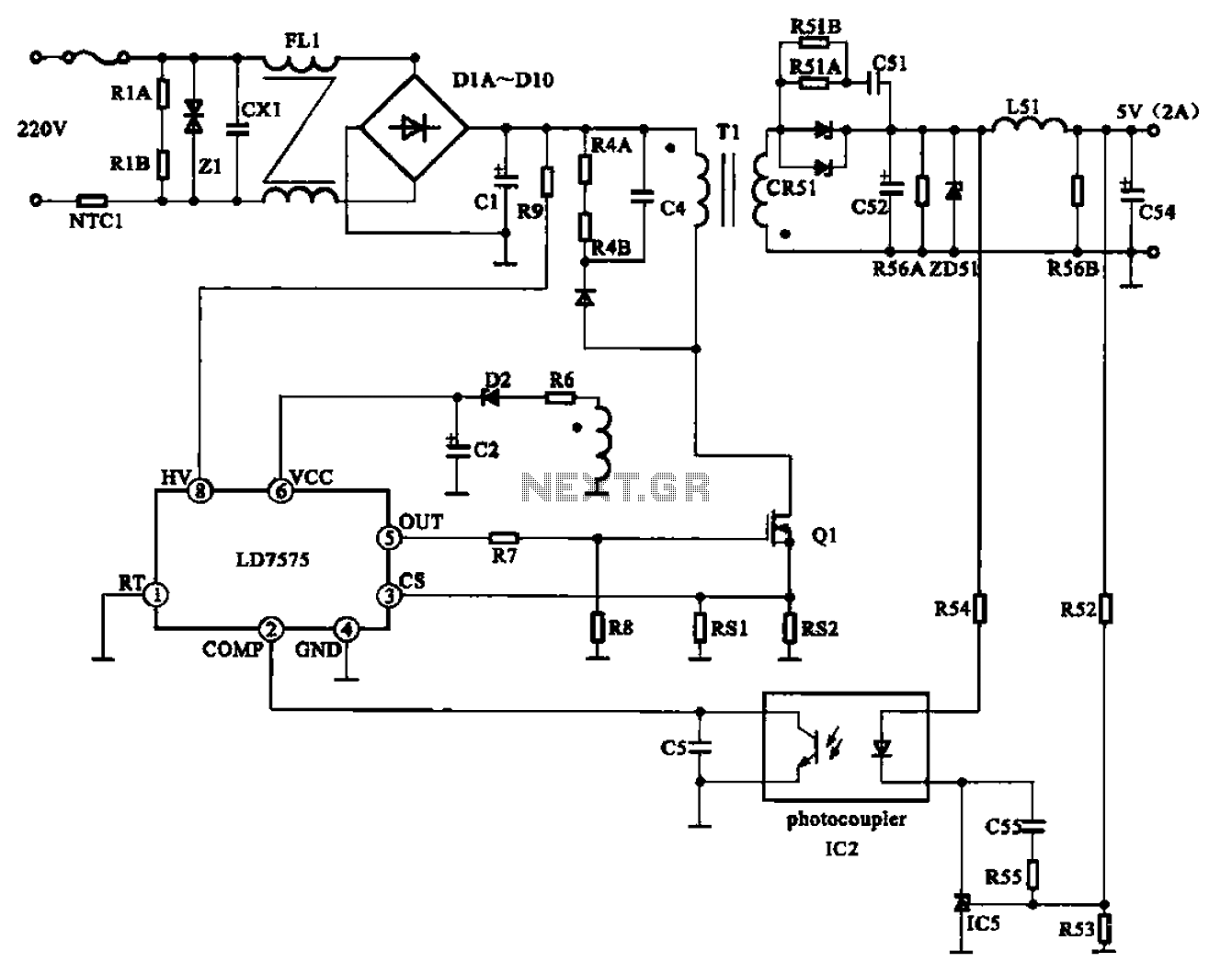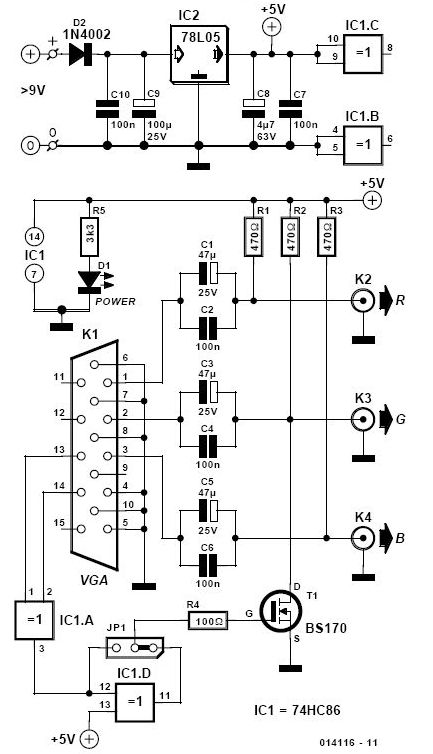
optoisolated adapter
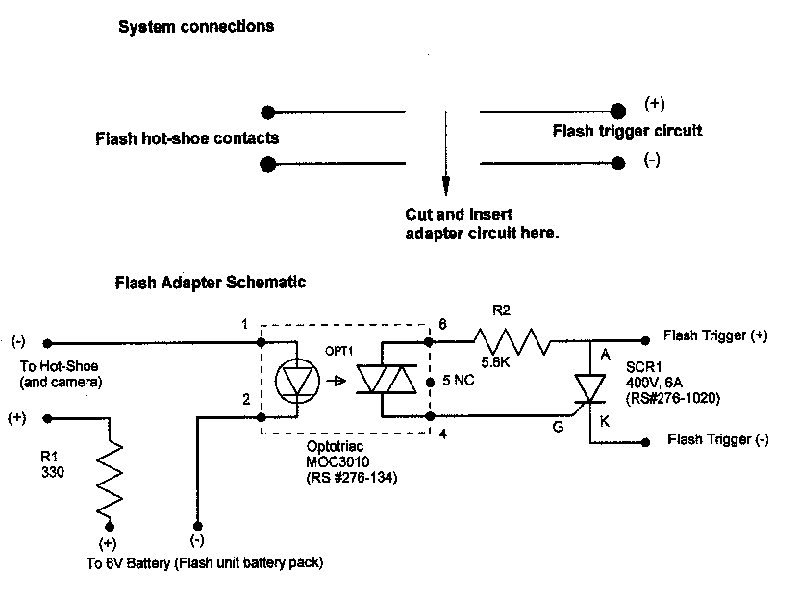
This design modifies a high voltage flash for use with a low voltage camera by employing an optocoupler to provide electronic isolation between the camera's contacts and the high voltage. The flash can be triggered using the 6-volt supply from the flash unit's batteries, and it is also compatible with lower voltages. The use of a triac optocoupler reduces the number of components required compared to other optocoupler designs and allows the flash's trigger circuit to power the SCR switch without needing an additional power source. The adapter circuit can be integrated into the wiring within the flash unit, connecting the flash trigger circuit to the flash unit's contacts. With only four small components in this circuit, there is a high likelihood of fitting it into the available space inside the flash unit's casing. The camera shutter activates the hot-shoe contacts, enabling current to flow from the 6V battery through the infrared-emitting diode at pins 1 and 2 of the OptoTriac. This current is transmitted via a light pulse, which activates the triac at pins 4 and 6 of the OptoTriac, powered by the voltage from the flash trigger circuit. Current then flows into the gate of the SCR, turning it on and discharging the flash trigger through the SCR's anode and cathode. The 330-ohm resistor (R1) limits the current through the hot-shoe to approximately 18 mA, while the 5.6 k-ohm resistor (R2) restricts the current through the triac to around 40 mA. Adjustments to R2 may be necessary based on the specific flash and SCR, as these values are based on a 218 V trigger voltage. Although the triac can handle larger currents (up to 1.2 A peak), SCRs typically require minimal gate current for activation. The component values provided have demonstrated reliability with a particular combination of Canon digital camera and slave flash; however, variations may exist with different setups. Additional information can be found on Kevin Bjorke's Non-Canon Strobe Page, which lists trigger voltages. Merely knowing the trigger voltage is insufficient, as it does not indicate the available current. Implementing an input buffer using a transistor or CMOS gate can mitigate this concern. SCRs and triacs should be driven robustly when controlling high current sources to ensure rapid activation and minimize the duration of significant current passing with a notable voltage drop. The optotriac's output is current-limited, reducing potential issues. However, the SCR discharges the trigger capacitor through the trigger transformer, which can result in several amperes being switched within microseconds. A gate current 10 to 20 times the minimum specification in the datasheet is advisable, provided it does not exceed the maximum rating. The primary risk associated with inadequate gate drive is the potential failure or unreliability of the SCR over time, which is a minor concern given the component's low cost.This design adapts such a high voltage flash for use on a low voltage camera by using an optocoupler to electronically isolate the camera`s contacts from the high voltage. It can then be triggered by the camera using the 6 volt supply from the flash unit`s batteries, but also works at a lower voltage.
The use of a triac optocoupler has the added advantages of using fewer parts than other optocoupler designs and can use the power from the flash`s trigger circuit to fire the SCR switch instead of a separate power source. The adapter circuit can be inserted into the lines inside the flash unit going between the flash trigger circuit and the flash unit`s contacts as shown below.
Since there are only 4 small parts in this circuit, there is a good chance that you can build it right into the available space inside the flash unit`s case. o- | - (+) Flash hot-shoe contacts | Flash trigger circuit o- | - (-) |/ Cut and insert adapter circuit below +-+ R2 (-) o-(1)-+ +-(6)-//-+-o Flash Trigger (+) | | OPTO1 | | 5.
6K |A To Hot-Shoe | _|_ _|_ | _|_ (and camera) | _\_/_-> _\_/_/_\_ (5)NC _\_/_ SCR1 | | | | / | 400V, 6A (+) o-+ +-(2)-+ | | |G | K (RS#276-1020) | | NC(3) +-(4)-+ | / | +-+ | R1 | Optotriac +-o Flash Trigger (-) 330 / | MOC3010 | (RS#276-134) | | o o (+) (-) To 6V Battery (Flash unit battery pack) The camera shutter shorts the hot-shoe contacts, causing current to flow from the 6V battery through the IR-emitting diode at pins 1 & 2 of the OptoTriac. The current is transferred via light pulse which switches on the triac at pins 4 and 6 of the OptoTriac which is powered by the voltage from the flash trigger circuit.
Current flows into the gate of the SCR, switching it on and causing discharge of the flash trigger through the anode and cathode of the SCR. The 330 ohm resistor (R1) limits the current through the hot-shoe to about 18 mA, and the 5. 6k ohm resistor (R2) limits the current through the triac to about 40 mA. You may need to use a different value for R2 for your particular flash and SCR, since this is based on a 218 V trigger voltage.
The triac can handle a larger current (1. 2 A peak), but SCR`s typically only use a small gate current for triggering. The circuit with component values shown seems to work reliably (at least so far) for this particular combination of Canon digital camera and slave flash. Others may be quite different. Some info can be found at Kevin Bjorke`s: Non-Canon Strobe Page with a List of Trigger Voltages. Just knowing the trigger voltage isn`t really enough information as it doesn`t imply anything about the available current.
Adding an input buffer using a transistor or CMOS gate would eliminate this as a concern. SCRs and triacs should be driven hard when they are controlling high current sources to make sure they turn on quickly and minimize time where they are passing significant current with a significant voltage drop. The optotriac`s output is current limited so this isn`t much of an issue. However, the SCR discharges the trigger capacitor through the trigger transformer and this could amount to several A switched in a few microseconds.
A gate current 10 to 20 times the minimum spec in the datasheet is recommended so long as this doesn`t exceed the maximum rating in the datasheet. In any case, the worst that will happen is that the SCR will fail or become unreliable after running with marginal gate drive - no great loss considering its cost.
🔗 External reference
The use of a triac optocoupler has the added advantages of using fewer parts than other optocoupler designs and can use the power from the flash`s trigger circuit to fire the SCR switch instead of a separate power source. The adapter circuit can be inserted into the lines inside the flash unit going between the flash trigger circuit and the flash unit`s contacts as shown below.
Since there are only 4 small parts in this circuit, there is a good chance that you can build it right into the available space inside the flash unit`s case. o- | - (+) Flash hot-shoe contacts | Flash trigger circuit o- | - (-) |/ Cut and insert adapter circuit below +-+ R2 (-) o-(1)-+ +-(6)-//-+-o Flash Trigger (+) | | OPTO1 | | 5.
6K |A To Hot-Shoe | _|_ _|_ | _|_ (and camera) | _\_/_-> _\_/_/_\_ (5)NC _\_/_ SCR1 | | | | / | 400V, 6A (+) o-+ +-(2)-+ | | |G | K (RS#276-1020) | | NC(3) +-(4)-+ | / | +-+ | R1 | Optotriac +-o Flash Trigger (-) 330 / | MOC3010 | (RS#276-134) | | o o (+) (-) To 6V Battery (Flash unit battery pack) The camera shutter shorts the hot-shoe contacts, causing current to flow from the 6V battery through the IR-emitting diode at pins 1 & 2 of the OptoTriac. The current is transferred via light pulse which switches on the triac at pins 4 and 6 of the OptoTriac which is powered by the voltage from the flash trigger circuit.
Current flows into the gate of the SCR, switching it on and causing discharge of the flash trigger through the anode and cathode of the SCR. The 330 ohm resistor (R1) limits the current through the hot-shoe to about 18 mA, and the 5. 6k ohm resistor (R2) limits the current through the triac to about 40 mA. You may need to use a different value for R2 for your particular flash and SCR, since this is based on a 218 V trigger voltage.
The triac can handle a larger current (1. 2 A peak), but SCR`s typically only use a small gate current for triggering. The circuit with component values shown seems to work reliably (at least so far) for this particular combination of Canon digital camera and slave flash. Others may be quite different. Some info can be found at Kevin Bjorke`s: Non-Canon Strobe Page with a List of Trigger Voltages. Just knowing the trigger voltage isn`t really enough information as it doesn`t imply anything about the available current.
Adding an input buffer using a transistor or CMOS gate would eliminate this as a concern. SCRs and triacs should be driven hard when they are controlling high current sources to make sure they turn on quickly and minimize time where they are passing significant current with a significant voltage drop. The optotriac`s output is current limited so this isn`t much of an issue. However, the SCR discharges the trigger capacitor through the trigger transformer and this could amount to several A switched in a few microseconds.
A gate current 10 to 20 times the minimum spec in the datasheet is recommended so long as this doesn`t exceed the maximum rating in the datasheet. In any case, the worst that will happen is that the SCR will fail or become unreliable after running with marginal gate drive - no great loss considering its cost.
🔗 External reference
